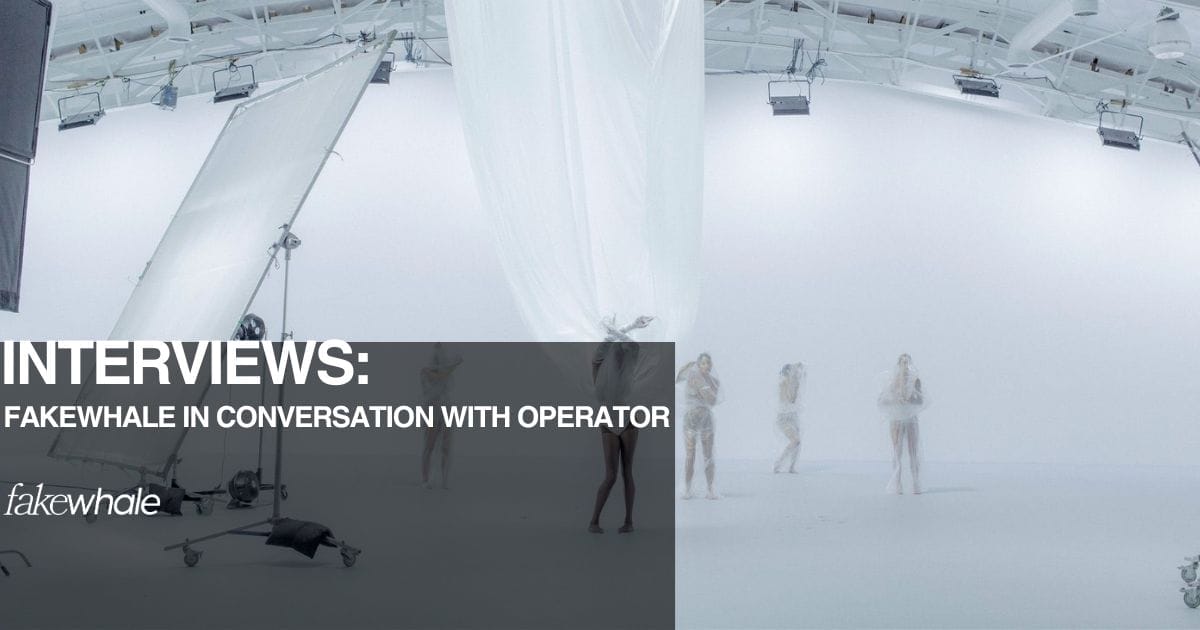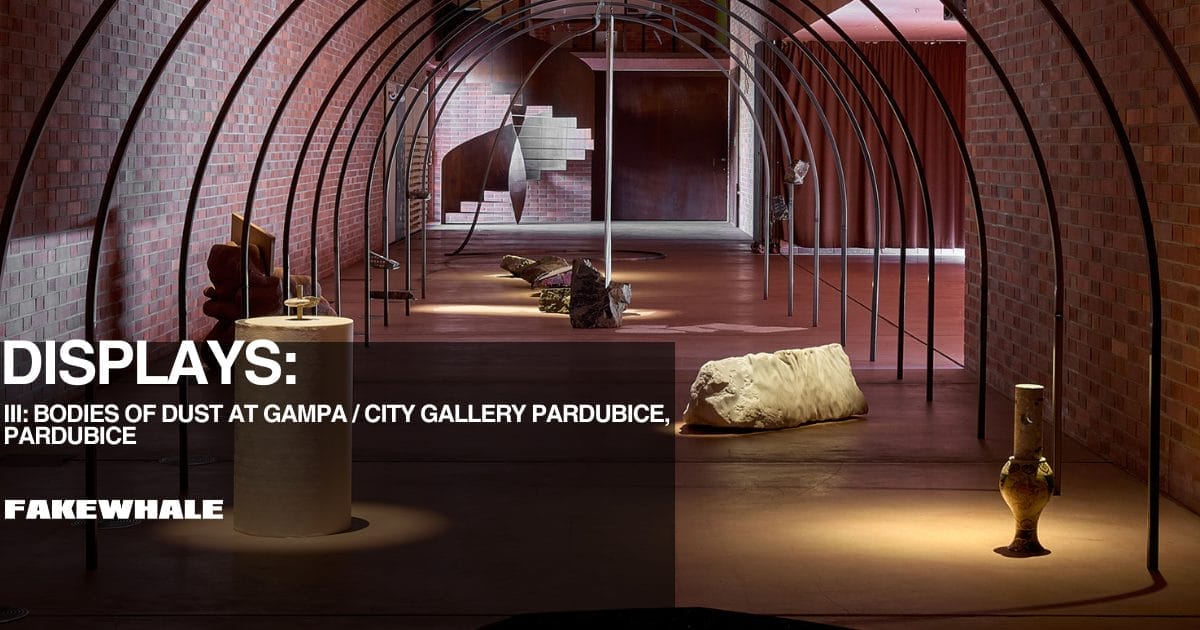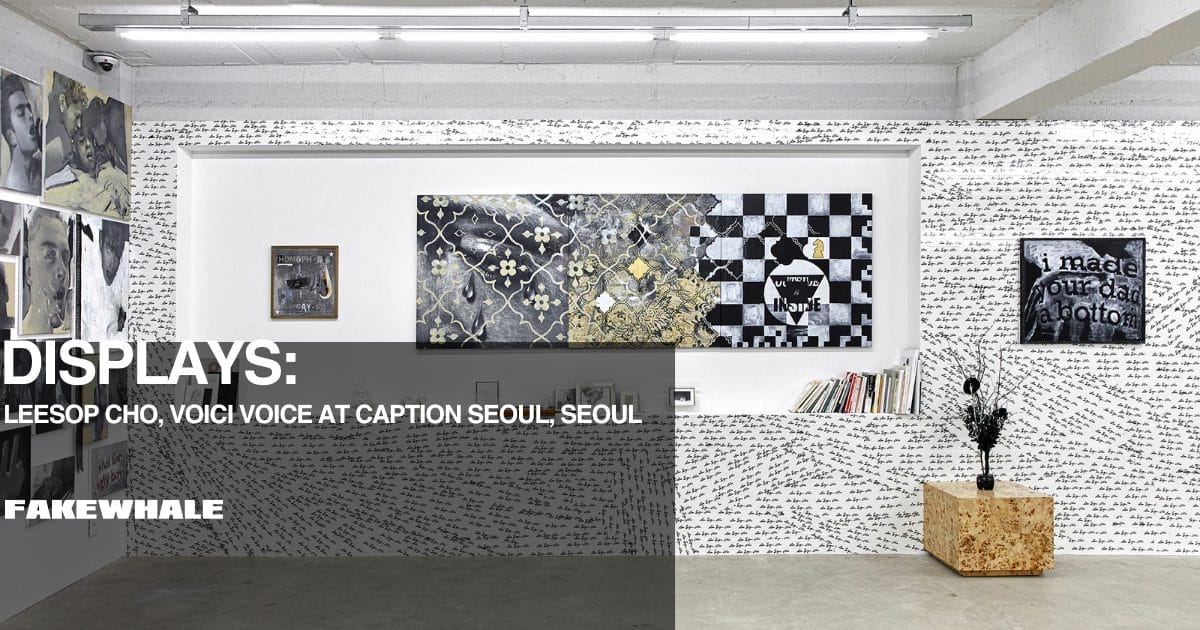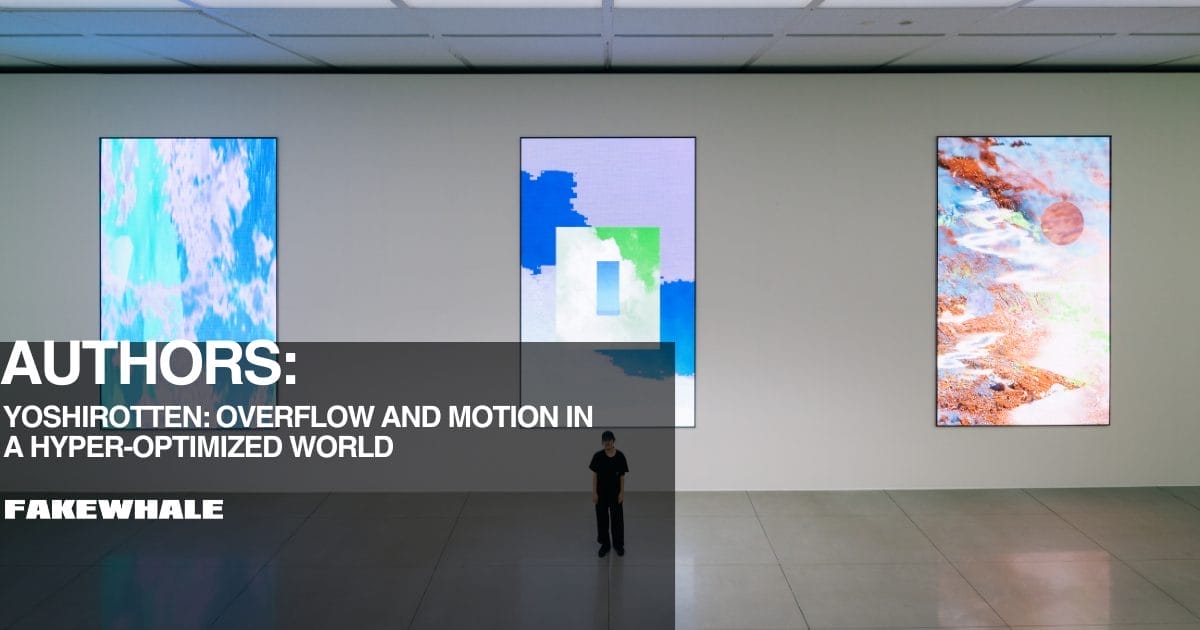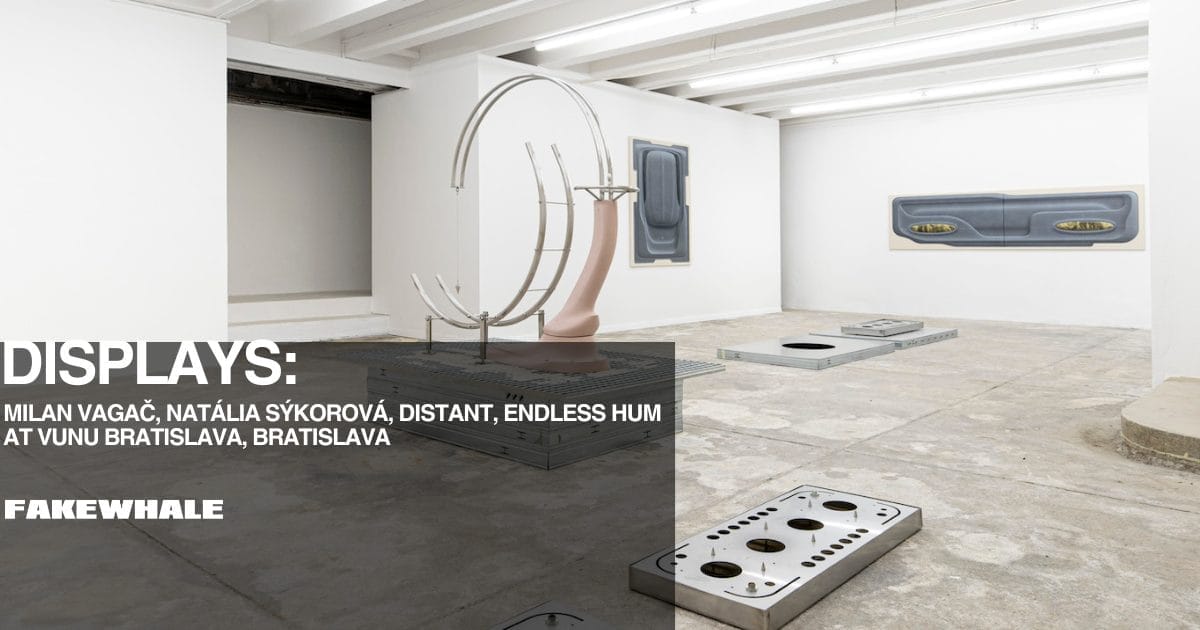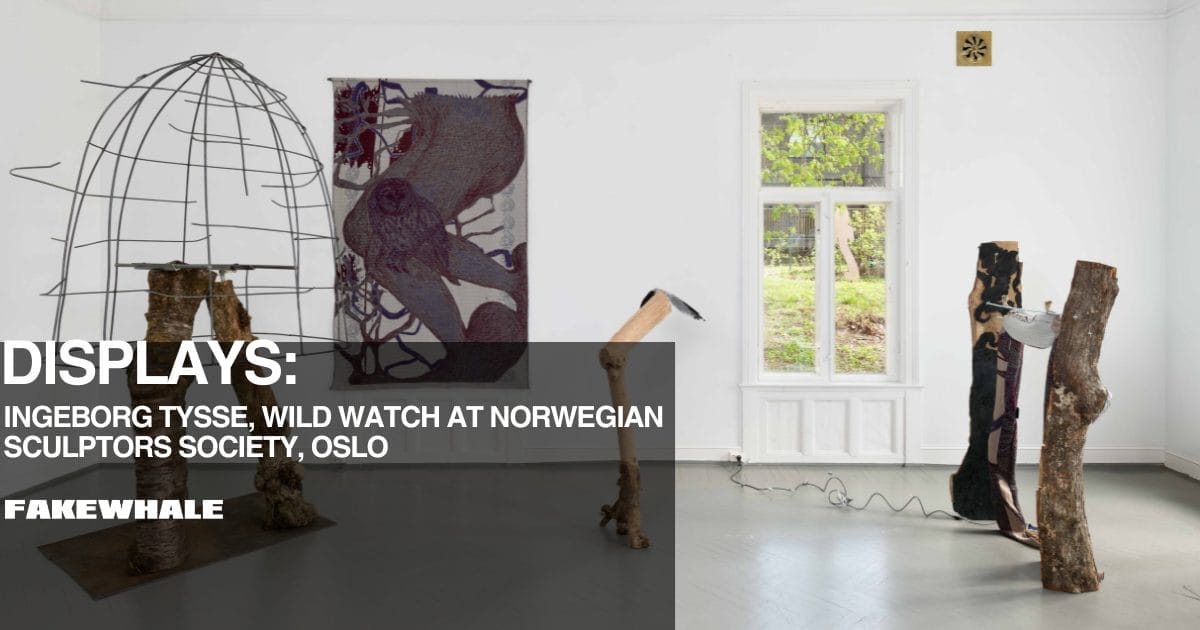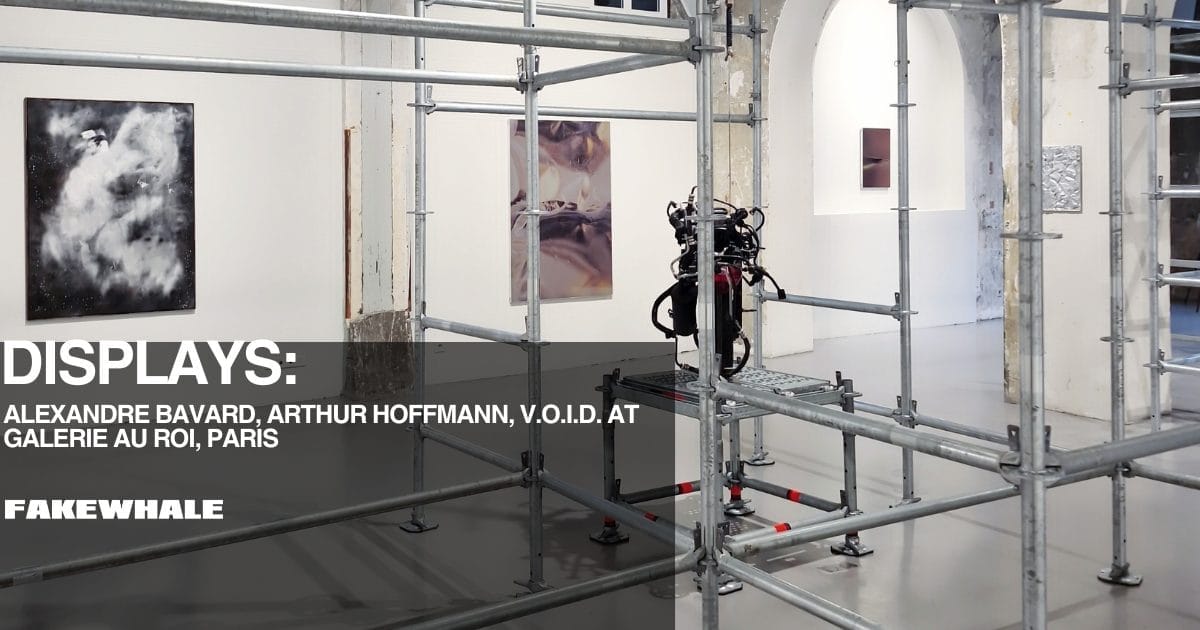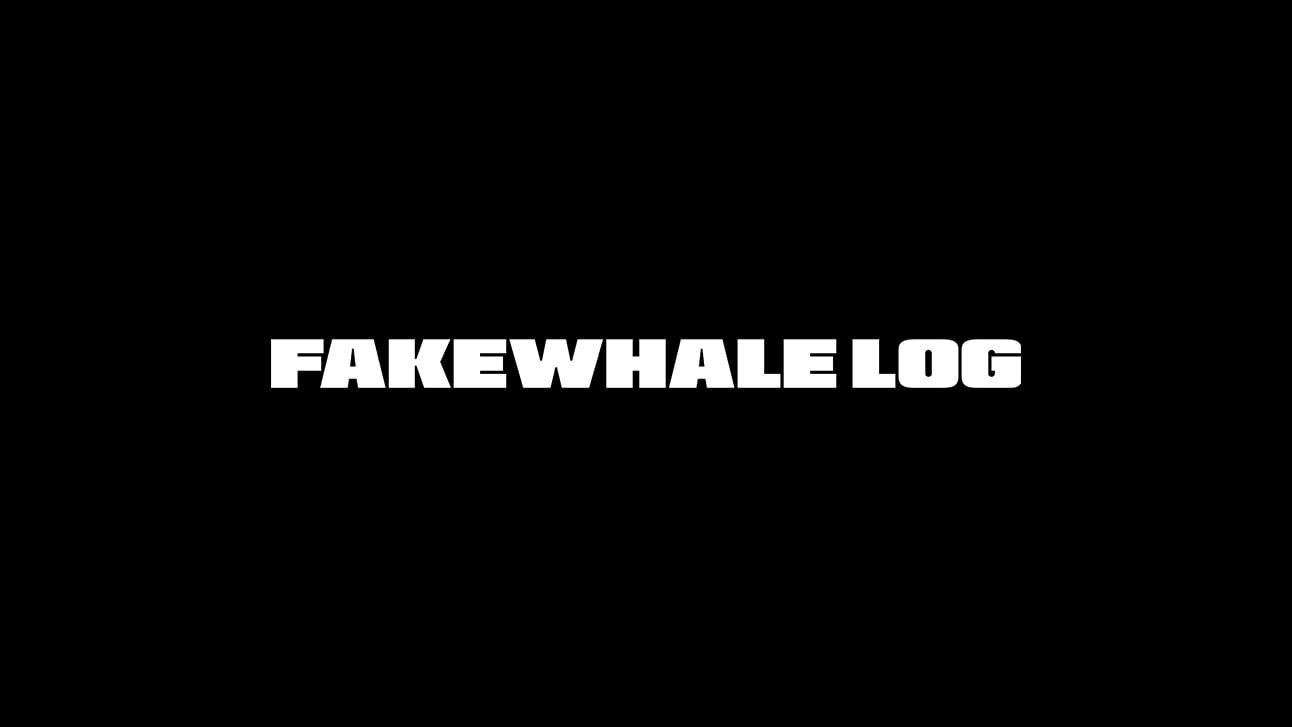
“Residual Form", Image of an output from Fakewhale Studio generated by AI and retouched in Photoshop.
Creating an artwork is no longer enough. Today, it must be designed to perform. But what does it mean, exactly, for something to “perform” in the digital visual sphere? What formal, compositional, and aesthetic elements determine whether a piece will stand out in the flow? Under algorithmic pressure, contemporary aesthetics have developed an implicit grammar, a recurring set of visual ingredients that, even if unspoken, guide the creation of much of today’s art.
The first is symmetry. Few things grab attention faster than a balanced, centered, and visually harmonious form. The digital eye seeks order, geometry, immediate focal points. A composition that’s too complex, scattered, or asymmetrical risks disappearing into the feed. Symmetry has become more than an aesthetic choice, it’s a strategy for recognition. A symmetrical work reads better in the square format of a feed, in thumbnails, in previews. It’s legible from a distance, identifiable even at a glance.(…)
INSIGHTS/ Visual Capital: Designing for the Feed, Aesthetics, Algorithms, and the Creation of Works Made to Be Seen

Infinite Scroll — Digital image, 1920×1080 px, Fakewhale, 2025
(…) There was a time when the artwork was born in the studio and only later documented. The creative process unfolded in an internal, autonomous, often invisible timeframe, culminating in an exhibition, a narrative, a moment of dialogue. Today, that sequence has been reversed. Art is no longer made to be exhibited, it is made to be visualized. Pre-production, the phase in which the artist imagines how the work will appear in the feed, which photo will announce it, what kind of visual impact it will have , is no longer just part of the process; it is often its driving force.
Before even beginning, the artist now faces questions once reserved for a marketing department:
How will this piece look on Instagram? What detail should be highlighted? Will it work better in color or black and white? Will it read well on a phone screen? Will it fit the vertical format of Stories or the square frame of the feed?
The logic is no longer strictly formal or conceptual, but digitally strategic. (…)
CONTINUE READING ↓
EXPLORE THE LATESTS ARTICLES↓
INSIGHTS/ “Rushes” at Fluentum, Berlin: video art that breathes through the ruins of the real

“Rushes” at Fluentum, Berlin, 2025. Photo: Stefan Korte
What’s left of lived experience when it’s constantly filtered, fragmented, and reframed through screens? Perhaps only an echo, a digital residue flickering between apps, feeds, and lenses, or something more elusive: a faint yet persistent awareness that everything we do, no matter how mundane or intimate, might become part of a public archive. Entering Rushes, the group exhibition at Fluentum in Berlin, is like catching your reflection in a turned-off monitor: unexpected, a little disorienting, and strangely revealing. The show doesn’t prescribe conclusions; instead, it immerses the viewer in that liminal space where reality is both recorded and performed, consumed and contested, private and deeply politicized.
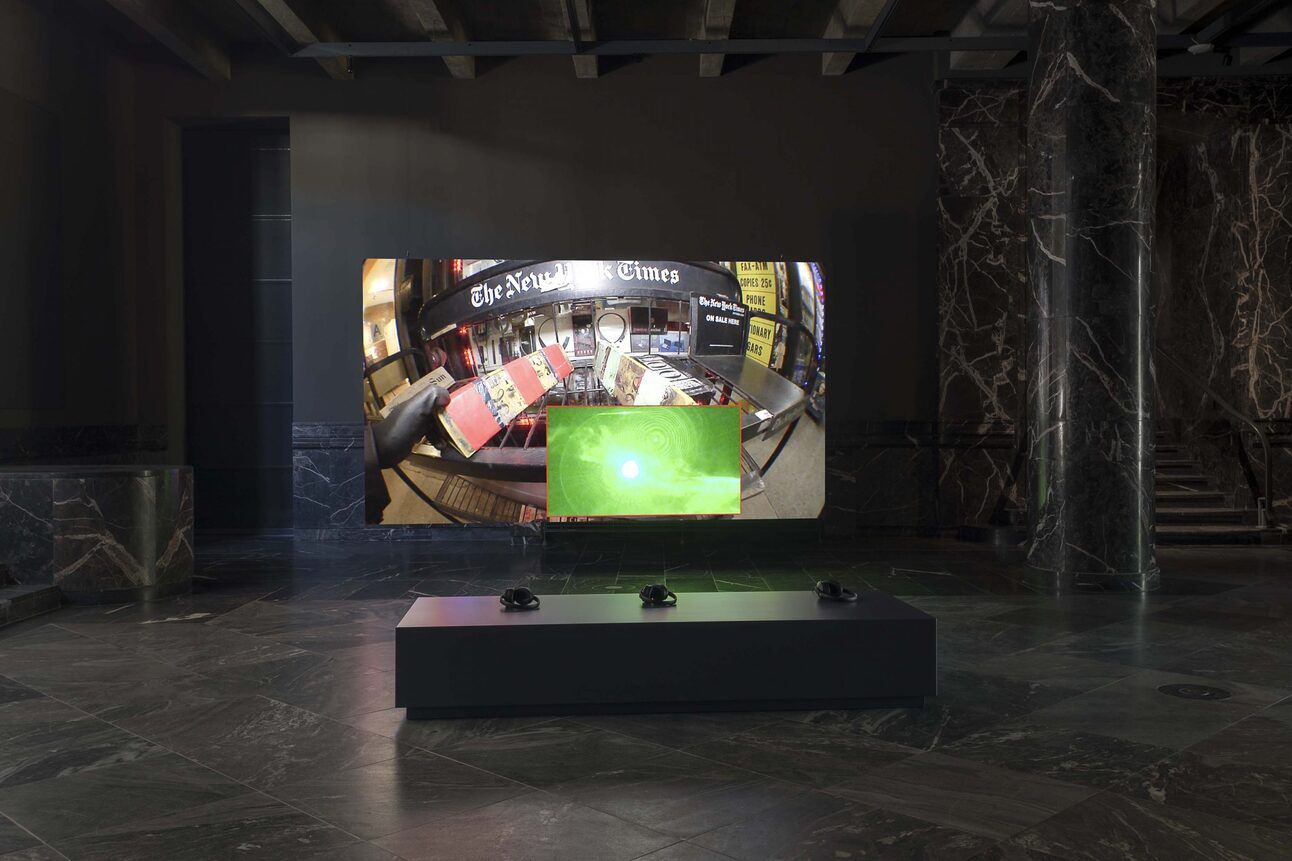
“Rushes” at Fluentum, Berlin, 2025. Photo: Stefan Korte
The setting is anything but neutral. Fluentum’s sprawling halls, housed in a repurposed Nazi-era military complex, carry the weight of historical surveillance and control, turning the building itself into a charged interlocutor. The artworks don’t merely occupy the space; they disrupt and repurpose it, folding its past into present-day concerns about visibility, power, and mediation. There’s no clear route through the exhibition: instead, visitors drift from dim corridors to flickering rooms, caught in a syncopated rhythm of screens, shadows, and synthetic sound. Each space feels both intimate and unstable, like stumbling into someone’s digital diary mid-upload. (…)
CONTINUE READING ↓

Authors' Insights explores experimental practices spanning sculpture, installation, video art, and transdisciplinary research. As part of the Fakewhale LOG, it provides writers, curators, and art professionals a platform to exchange perspectives, driving deeper engagement with contemporary critical discourse.
Are you a writer, curator, or art professional? Do you have a unique perspective to share or a critical reflection that could enrich the contemporary debate? Fakewhale invites you to contribute to the new “Authors Insights” section. Reach out at [email protected]
AUTHORS/ YOSHIROTTEN: Overflow and Motion in a Hyper-Optimized World by Benoit Palop
Japanese artist YOSHIROTTEN operates at the intersection of fine art, design, digital media, and immersive installation, a practice that persistently unsettles the conventions of so-called “clean” technocapitalist aesthetics.
Instead of polishing images into minimalism (often associated with sterility), he embraces visual noise, aesthetic saturation, and unpredictability—what we might call a politics of fluidity—to critique the rigid, data-driven rationale that governs today’s interfaces.
His work is as much an interrogation of the mechanisms it employs as it is a celebration of their creative potential. (…)
Central to YOSHIROTTEN’s approach is the concept of fluidity. But what does that actually mean?
It refers to the capacity of imagery and installations to move freely, flowing across surfaces we usually take for granted. In his process, pixels, color, and shape behave like a liquid: bleeding outward, creating drift, and new, unstable space. This approach resonates with Gilles Deleuze and Félix Guattari’s notion of becoming, a continual process of transformation that rejects fixed identities and hierarchies. It also parallels Jean Baudrillard’s theory of simulacra, where images circulate without any original referent, collapsing the wall that separates representation and reality. In FUTURE NATURE II, presented at the Kirishima Open-Air Museum in Kagoshima in late 2024 for example, YOSHIROTTEN enveloped the entire Art Hall in a vast environment of neon cascades and erratic visual cracks. The result was a techno-organic landscape that defied the logic of flattened, optimized image systems. By allowing his visuals to deliberately leak out of standard frames and exposing artifacts and raw data streams, he deconstructs the viewer’s assumptions about mediation.
He doesn’t conceal the machinery—he makes it the aesthetic. (…)
CONTINUE READING ↓
INSIGHTS / Curator Spotlight #5: Cao Shu

Cao Shu | Ideology | interactive video installation | 4K screen, stereo camera, graphics data conversion program, split screen | 2021 | Image source, OCAT & KADIST Emerging Media Artist Program 2022 - In Solidarity with ____?
In this fourth chapter of our Curator Spotlight series, we continue our journey through the evolving landscape of Chinese digital and new media art. This time, we turn our attention to Cao Shu, a multidisciplinary artist whose practice spans writing, photography, 3D digital moving image, mixed-media sculpture, and video game-based installations.
Through this conversation, Giuseppe Moscatello and Linda Shen explore the intricately layered universe Cao constructs, a universe where digital aesthetics and mythic structures intersect, and where haunting reflections on history, memory, and speculative futures emerge.
Cao Shu’s recent work explores subjects such as nuclear energy as a ghostly medium, socialist science fiction, swarm intelligence, digital memory and encryption systems, and speculative cosmologies like the Chthulucene. He weaves these themes into projects that blur the boundaries between visual narrative, interactive systems, and philosophical inquiry, often positioning the viewer in a space of uncertainty and curiosity.
His experimental works have been exhibited at world-renowned venues such as Kunsthaus Baselland, Matadero Madrid, M+ Museum Hong Kong, Power Station of Art (Shanghai), UCCA Dune, BY ART MATTERS (Hangzhou), Macao Art Museum, OCAT Shanghai, Sleep Center New York, and White Rabbit Gallery (Sydney). His moving image projects have also earned recognition in major international film festivals, including Leipzig DOK, DMZ Docs, Annecy, Ottawa International Animation Festival, and the Milano and Message to Man International Film Festivals.
Cao’s practice invites us to consider how digital languages—, ar from being neutral, encode memory, ideology, and speculation. His visual poetics speak to a deeper truth beneath the surface of algorithmic systems: that technology is not just a tool for representation, but a generative mythological engine capable of summoning ghosts, rewriting futures, and storing the unconscious collective of an era.
In this interview, we explore how Cao approaches narrative structure, historical hauntings, and the role of the artist as both archivist and architect of speculative digital realities. (…)
CONTINUE READING ↓
EXPLORE THE LATESTS ARTICLES↓
If you want to submit the full documentation for an exhibition or event, use the dedicated form HERE. Every week, our editorial team reviews and selects the best applications.
INSIGHTS/ Alexandre Bavard, Arthur Hoffmann, V.O.I.D. at Galerie Au Roi, Paris
From the very entrance, a sensation of immersion takes hold. The gaze sharpens, footsteps slow, ab- sorbed by a plastic dispositif that functions as a coherent whole: every element vibrates, resonates, and engages the entire body. The two-headed installation intrigues, unsettles, and defies categorization, an immersive construction that resists immediate naming. Alexandre Bavard and Arthur Hoffmann lead us on a meandering journey through reconstructed lands- capes and reinterpreted urban zones. They sketch a fragmentary map of the city—its interstices, voids, wastelands, empty spaces, suspended construction sites, and buildings consigned to oblivion. Between ruins and margins, they advance like tireless surveyors, urban navigators exploring cities as shifting ar- chipelagos or as fields of experimentation and play. In V.O.I.D., the two artists delve into the concept of the non-place, dear to Michel de Certeau and Marc Augé—transitional, neutral spaces without social or historical anchoring. These places of waiting, erasure, and in-betweenness are revealed here as thresholds, thresholds of experience and sensitive reactivation. Upon entering the gallery space, one is confronted with a monumental scaffold, a true tubular mesh. (…)
V.O.I.D. by Alexandre Bavard and Arthur Hoffmann, curated by a-topos’, at Galerie Au Roi, Paris, 30/04/2025–10/05/2025.
CONTINUE READING ↓
That wraps this week’s issue of the Fakewhale Newsletter, be sure to check in for the next one for more insights into the Fakewhale ecosystem!

